Emergent Literacy Programs
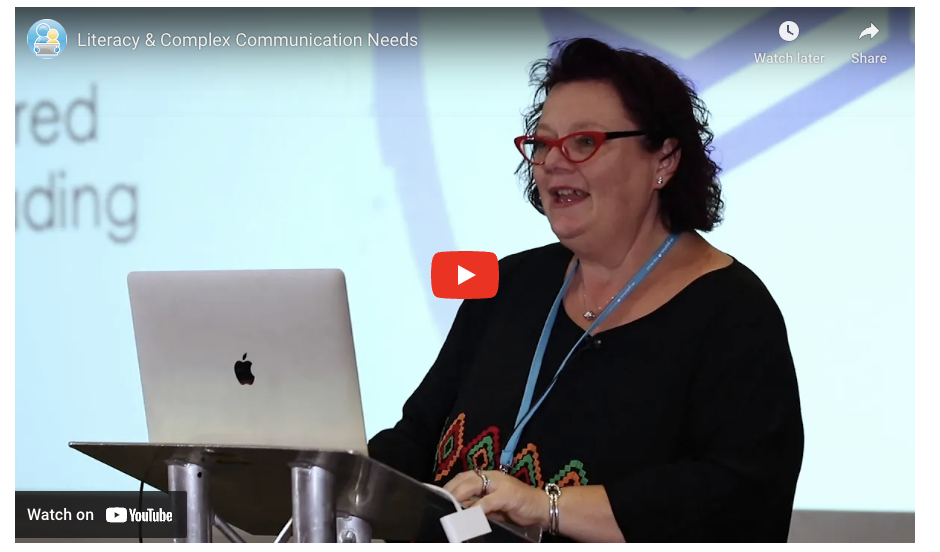
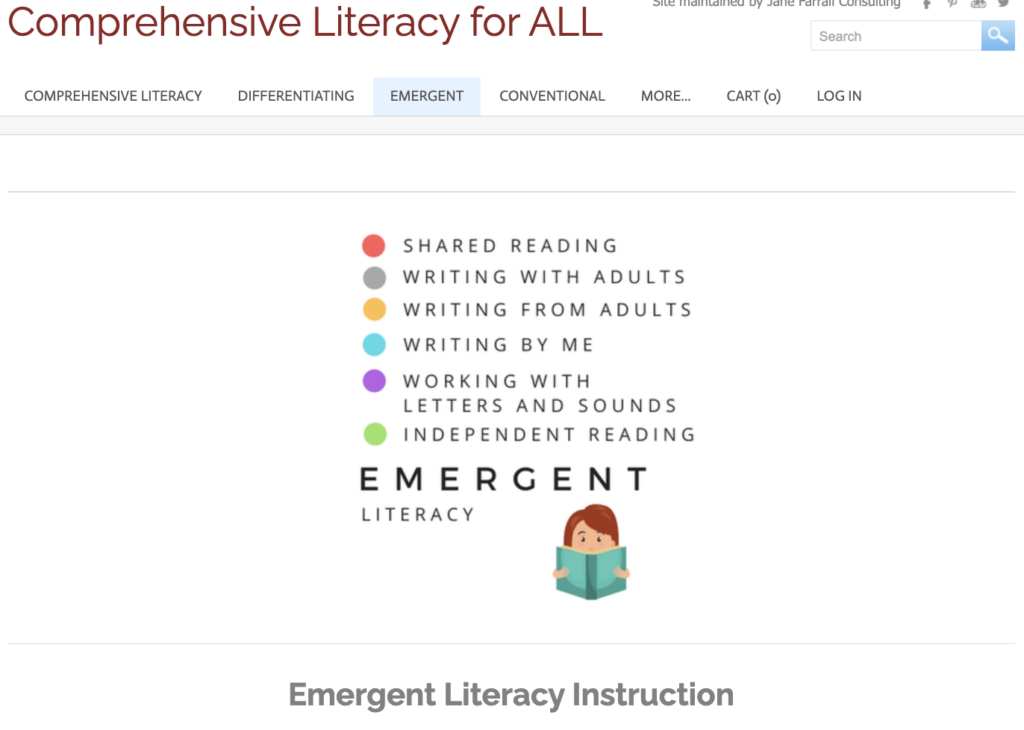
Comprehensive Literacy for All
Website by Jane Farrall
Each area of emergent literacy is addressed in detail, with pages with details and resources by a well-known leader in the AAC/literacy world.

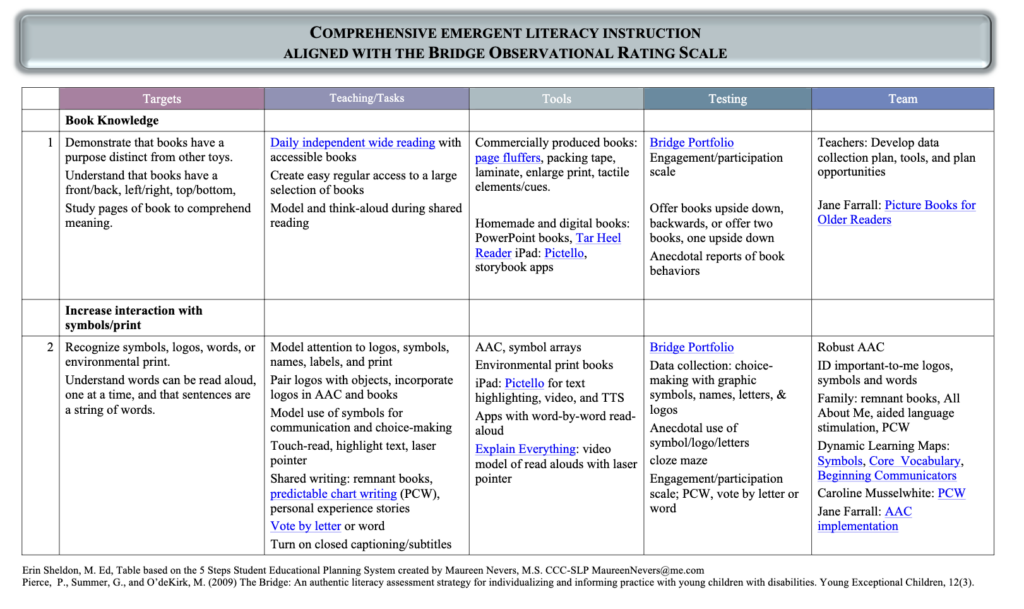
Literacy for All: In conversation with Dr. Caroline Musselwhite
by Engaging All Learners
Dr Caroline Musselwhite supports teacher practice in the area of literacy for students with significant support needs. The 11 video clips are all under 3 minutes and each one focuses on a very specific practice related to literacy instruction.
Good Literacy Instruction for All Students
Explore and Understand Text
Symbols and Learning to Read
Word Wall
Repetition and Variety
Building Background Knowledge
Reinforcement AND Informative Feedback
Teaching and Testing Questions
Attributing Meaning
Engaging Older Students
Underestimating Potential
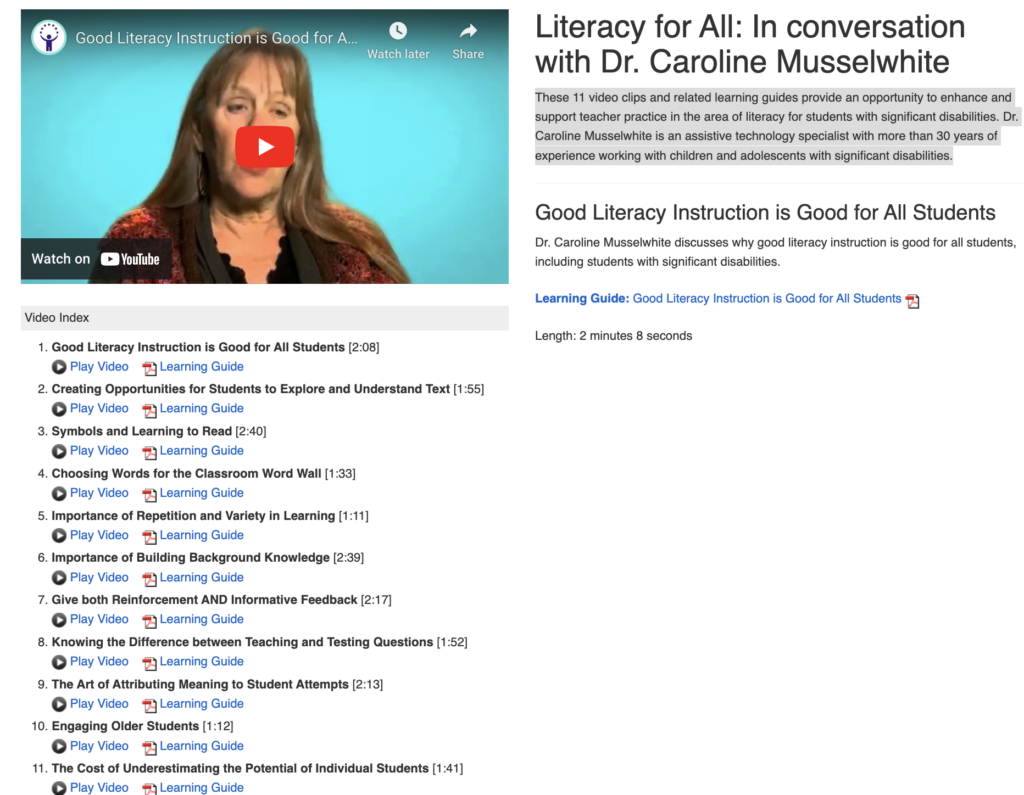
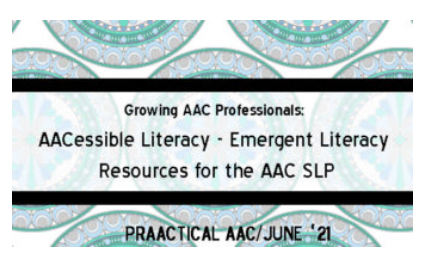
Integrating Comprehensive Literacy Instruction
by AssistiveWare
This is a nice balance of a bigger picture of literacy with some important details about what should be part of a comprehensive literacy instruction. They outline the primary elements of both emergent and conventional literacy. The post also emphasizes the role of AAC in the literacy program, so educators can see how instruction can benefit all areas.
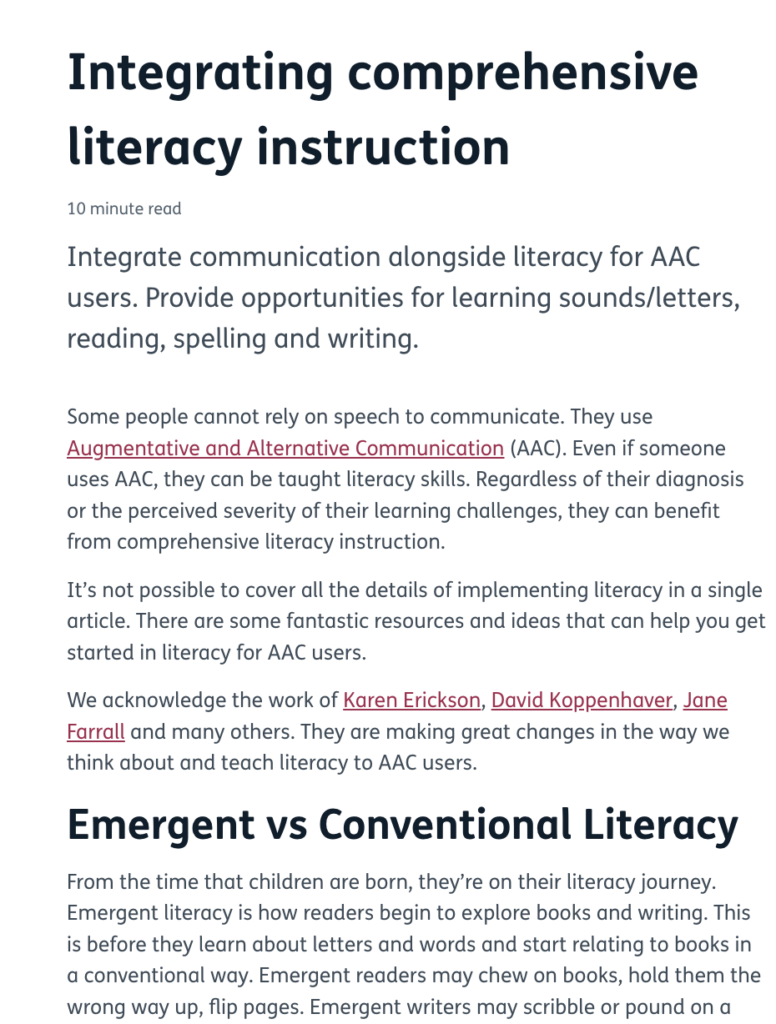
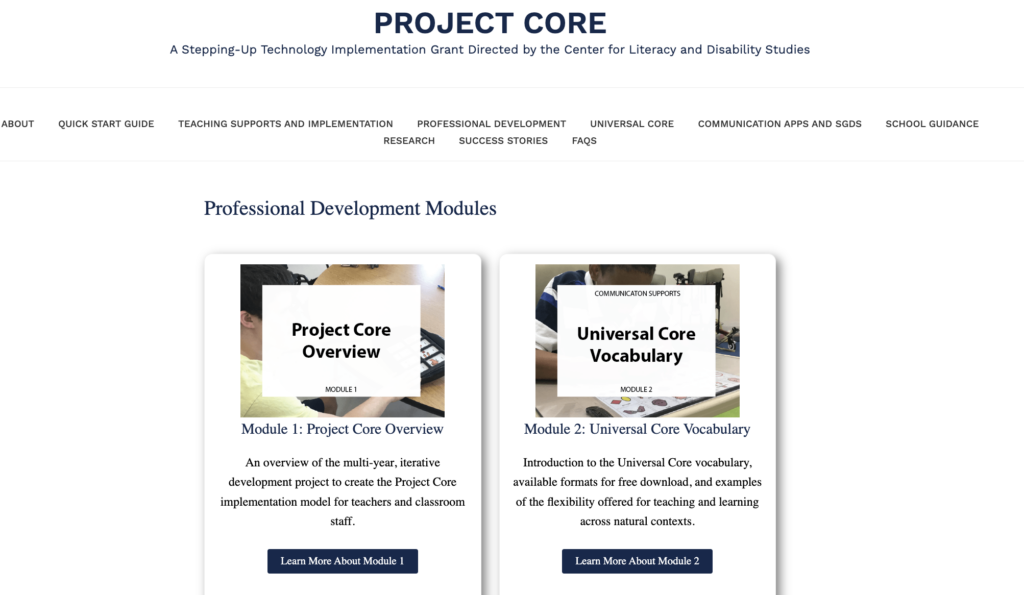
Project Core Professional Development
by Center for Literacy and Disability Studies, Department of Health Sciences, UNC-Chapel Hill
The Project Core focuses on a flexible set of Universal Core vocabulary. The site includes learning modules and materials that show how evidence-based instructional methods are used to teach students to use Core Vocabulary for communication.
The learning modules are free and include documents and videos on specific topics related to core vocabulary instruction. The modules range from 6 to 22 minutes in length and can be completed as a group with a facilitator or individually.